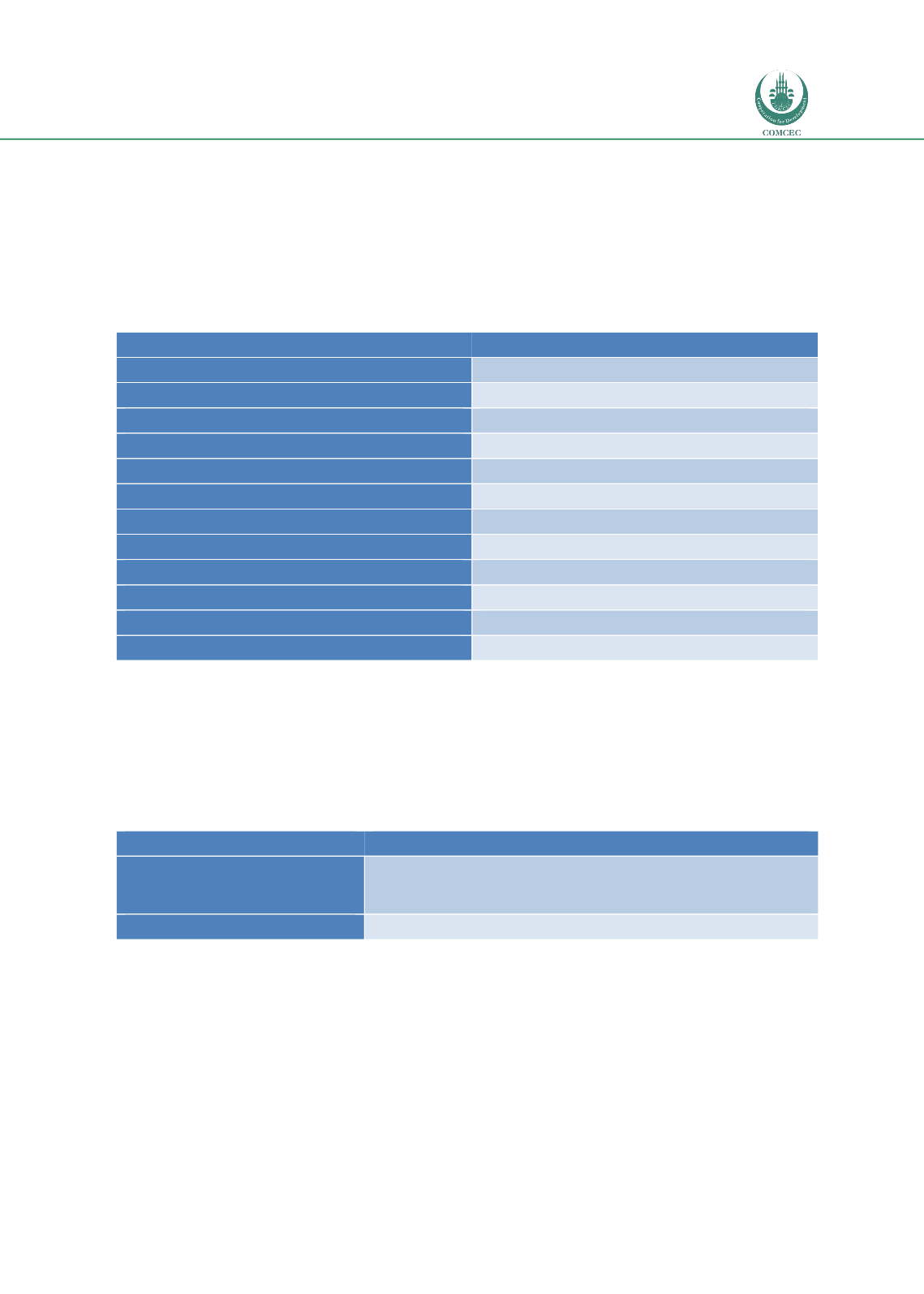

Reducing Postharvest Losses
In the OIC Member Countries
77
capture from three countries (Cote d’Ivoire and Mali in Africa and Indonesia). By-products
were fish sauce, fish skin or leather, fish oil and offal’s for inland capture. Only one respondent
gave an estimate of weight losses which was for Mali. Weight losses in fish and sea food were
estimated to 50% overall and the key-steps were processing at landing and utilisation (30%
loss) and consumption (50% loss). Global economic losses were estimated higher than weight
losses (70%) and the same critical steps were reported. Causes of weight and economic losses
were reported i
n Table.Table 41: Causes of PHLs reported for fish and seafood and per step of Postharvest
Postharvest step
Inland capture
Selling from boat/shore/pond side
Weight/quality loss
Processing at landing
Quality deterioration
Transport to market/process point
Quality deterioration
Sale fresh/chilled
Inadequate ice/chilling capacity
Store at processing point
Quality deterioration
Processing/freezing
Quality deterioration
Transport to final market
Quality deterioration
Store at selling point
Quality deterioration
Marketing/retailing
Quality deterioration
Transport to home
Quality deterioration
Storage at home
Quality deterioration
Utilisation/Consumption
-
Losses were reported for inland capture only. However these comments can be extrapolated to
marine capture. Whilst selling fish or seafood, loss in weight and quality were cited whilst for
the other steps, quality deterioration (fish is extremely sensitive to temperature and
microbiological degradation) was highlighted as major. Inadequate ice/chilling capacity during
sale of fish was also cited.
Tablereports ways to mitigate losses in fish and sea food and
constraints.
Table 42: Mitigation of PHLs reported for fish and seafood and per step of Postharvest
Postharvest step
Inland capture
Selling from boat/shore/pond
side
Processing at landing: constraints: ice storage capacity,
availability of dryers for rainy seasons for processing at
landing
Processing at landing
Hygiene practices
Hygiene practices whilst processing at landing were cited. In addition, whilst processing at
landing and selling fresh fish, constraints are the ice storage capacity and the availability of
dryers if fish is smoked or dried.
3.10.
Conclusions
The number of responses (59) is not statistically valid for comparison of the crops and
countries. There is no means to validating or verifying the figures we have received but can
cross reference against other published data.
















